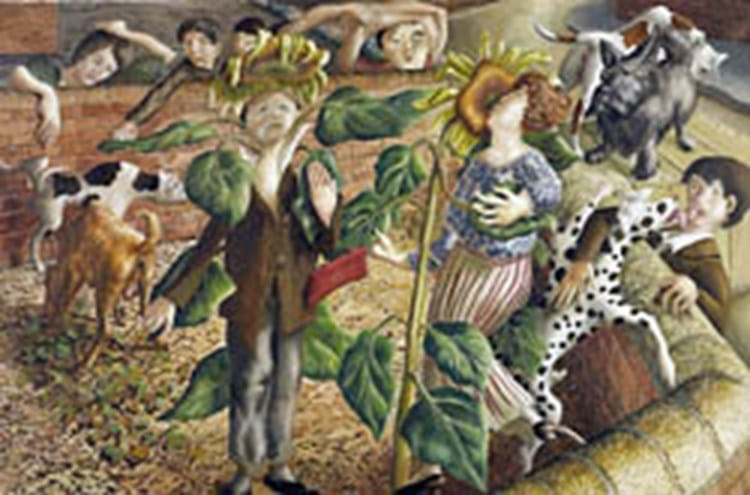
The evening auction of 30 selected works on June 15 raised £32.8m, more than double the previous record total in this category, and a whole series of artists - Edward Burra, Graham Sutherland, Patrick Heron - were taken to new levels. But the main thrust of the sale came from the largest and most important group of paintings by Stanley Spencer (1891-1959) ever offered.
If there was any speculation before the sale whether the market could absorb such a selection of wacky but high calibre narrative paintings in one go, it was duly allayed as unprecedented competition emerged for the Cookham artist.
On the night, six Spencers made over £2m, selling to five different buyers. The previous record had been set at £1.75m only three weeks earlier when The Crucifixion sold at Christie's to London dealer Daniel Katz - a price which now seems good value.
Here again the trade were active, although mostly acting as agents for collectors.
The first Spencer offered from the rostrum was Workmen in the House, a well known but little seen oil on canvas from 1935 which was displayed on the front cover of the catalogue. It easily overshot a £1.5m-2.5m estimate and came down to a battle between Chelsea-based Offer Waterman and John Robertson who ran the Bourne Gallery in Reigate until 2010 but now continues to operate as a private dealer.
Taking instructions on his mobile phone, Mr Robertson eventually secured the work at £4.2m.
The record lasted 15 minutes. Nine lots later came Sunflower and Dog Worship, which had a lower estimate at £1m-1.5m but which went on to sell for even higher sum.
Mr Robertson was in contention up to £3.4m but here the bidding was then taken up by a telephone bidder and by dealer Richard Nagy who had flown back from the Art Basel fair to attend the sale in person.
Mr Nagy ended up as the underbidder as the hammer fell at £4.8m to the telephone buyer.
The painting from 1937, shown here, was a complex take on the artist's idea of universal harmony, with a husband and wife shown in a state of mystical joy and a group of dogs enjoying an unbothered freedom with their genitalia on full display. To the right, the artist portrays himself in the scene as he embraces an enthusiastic Dalmatian with his tongue.
The 2ft 4in x 3ft 6in (71cm x 1.08m) oil on canvas was originally bought by Sir Hugh Walpole within a few hours of first being exhibited. Spencer's lawyer, Wilfrid Evill, who assembled the collection being sold at Sotheby's, was disappointed at having missed it, but was able to buy it from Walpole some seven years later for only £100.
The same telephone buyer purchased Spencer's Beatitude 8: Worship at £3.4m, while The Bathing Pool, Dogs was knocked down to Offer Waterman at £3.7m.
Alongside the Spencers, the evening sale also delivered a major jump for a Lucian Freud (b.1922) work on paper when Boat on a Beach drew bidding from four members of the trade. It was knocked down at £2.3m to Novella Baroni, who was also thought to be bidding on behalf of a private client.
A large rise also came for Edward Burra as a UK dealer on the phone purchased the 1948 watercolour Zoot Suits at £1.8m, a work showing a group of men newly arrived from Jamaica in London's Berwick Street.
The Evill-Frost collection itself had been formed by Wilfrid Evill between 1925 and 1960 - the London solicitor had even received some of the Stanley Spencers in lieu of legal fees. While details about his role as an arts patron remain somewhat elusive, the enthusiasm at the viewing and reaction of bidders would seem to confirm his remarkable eye.
On his death in 1963, it was inherited by his ward Honor Frost and it came to the market after she died last year with the proceeds of the sale going to charitable causes relating to marine archaeology.
The executors had set either minimal or no reserves on the lots, allowing the auctioneers to claim a white-glove sale for the whole collection.
As well as the lucrative evening sale, a further £3.26m came from the 87-lot day sale of Modern British art the following morning. The third part of the collection, a more traditional array of decorative arts, furniture and French porcelain, added a further £844,200.
By Alex Capon




